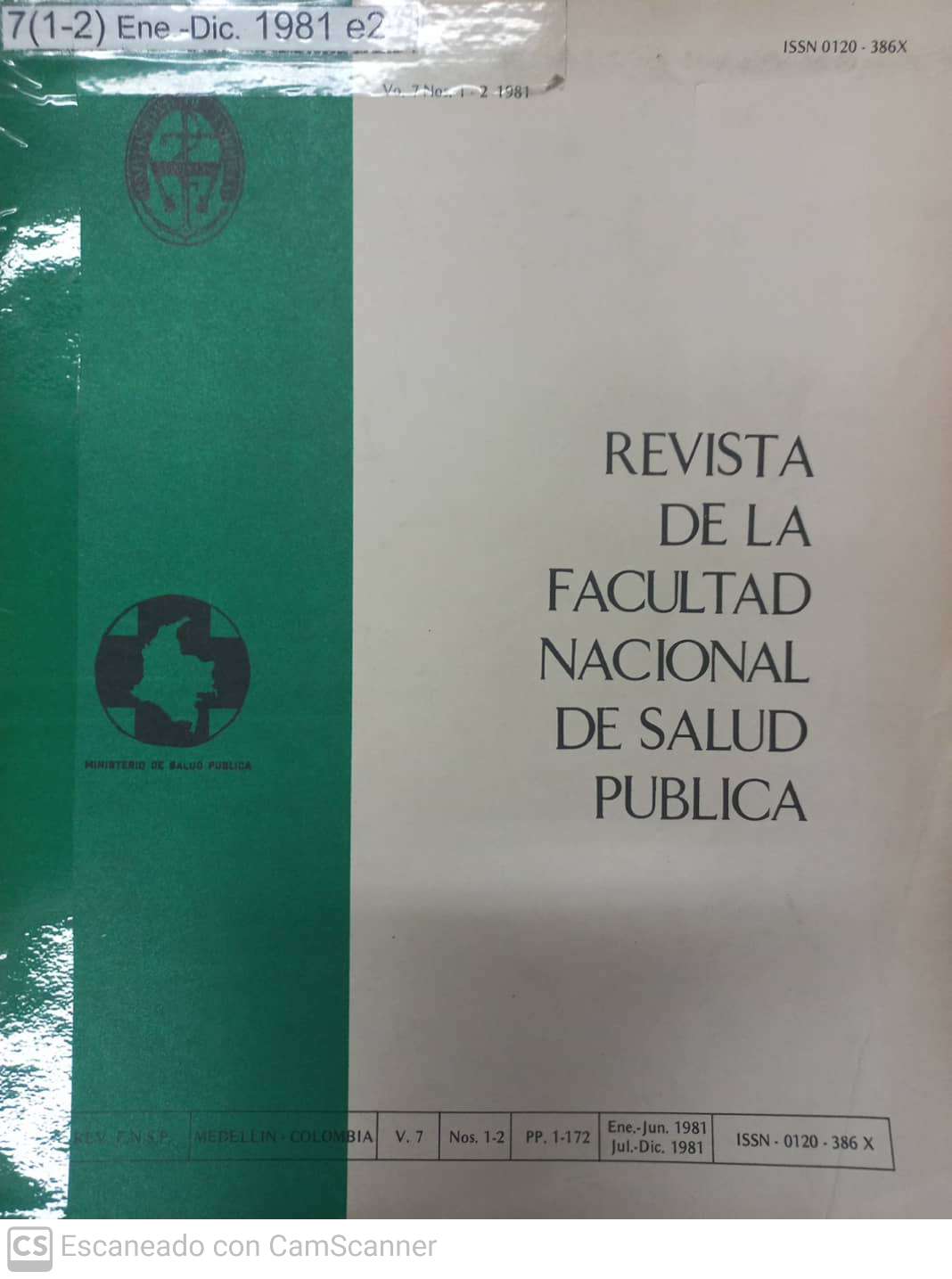INDICE DE TENSION TERMICA EFECTIVA USANDO UN COMPUTADOR DE BOLSILLO
Resumen
De: KAMON, E. and RYAN, C. Effective heat st rain index using pocket computer, American Industrial Hygiene Association Journal 42(8): 611-615, aug. 1981
Se sugiere un índice de tensión térmica efectiva (EHSI) usando una calculadora con memoria para la evaluación de condiciones donde prevalezca el ambiente caluroso.
Las entradas a la calculadora programada incluyen la temperatura de bulbo seco, bulbo húmedo y globo y los valores del movimiento de aire y del metabolismo. El índice está basado en un programa para el calculo del balance del calor total y la eficiencia de sudoración. El resultado de la información sobre las condiciones del ambiente incluyen: la carga calórica total; la capacidad evaporativa del ambiente; la humedad de la piel y la tensión térmica aplicable. El resultado del EHSI muestra lo siguiente: No tensión; Baja Tensión; Alta Tensión o Límites de Tiempo de Exposición.
Descargas
Citas
Kerslabe, D. McK.. The Stress of Hot Environments. Cambridge, Univ. Press, 1972.
Lee, D. H. K.. Seventy-five years of searching for a heat index. Environmental Research 22: 331 356, 1980.
Belding, H. S. and Hatch, T. F. Index for evaluating heat stress in terms of the resultin physiological strain. Heat. Pipe. Air Condit, 27: 129-136, 1955.
4. ACGHI. Threshold Limit Values for Chemical Subtances and Physical Agents in the Work Room Environment with intented Changes for 1972. American Conference of Governmental Industrial Hygienists. pp. 69 - 79, 1972.
Department of Labor. Recommendation for a Standard for Work in Hot Environments. Draft No. 5 Standard Advisory Committee on Heat Stress. Washington, DC. Full test giben by Bu, of Natl. Affairs, Occupational Sa- fety and Health Reporter 3: 1055, 1974.
Botsford, J. H. A wet globe thermometer for environ- mental heat measurements. Am. Ind. Hyg. Assoc. J. 32: 1-10, 1971.
Pulket, C., A. Henschel, W. R. Burg And B.E. Saltz- man: A comparison of heat stress indices in a hot-humid environment. Am. Ind. Hyg. Assoc. J. 41: 442 449, 1980.
Botsford, J. H. A simple method for limiting personal heat exposure. Am. Ind. Hyg. Con. Abstract, 1980.
Hatch, T. F. Assessment of heat stress in Temperature. Its Measurement and Control in Science and Industry, edited by J. D. Hardy. Reinhold, NY, v. 3, pp. 306- 318, 1963
Romero Blanco, H. A. Effect of Air Speed and Radia- tion on the Difference between Natural and Psychro- metric Wet Bulb Temperature. Masters Thesis, Universi- ty of Pittsburgh, 1971.
AIHA. Ergonomics guide to assessment of metabolic and cardiac cost of physical work. Am Ind. Hyg. Assoc. J. 32: 560 564, 1971.
ALHA. Heating and cooling for man in industry. 2a, ed, Chicago, Am. Ind. Hyg. Assoc., 1975.
Kamon, E. Ergonomics guide to matching physically demanding job to the worker. Am. Ind. Hyg. Assoc. J. (in review).
ASHRAE: Handbook of Fundamentals. New York. Am Soc. Heat. Refrg. Air Cond. Eng., 1972.
Haines. G. F., Jr. and Hatch, T. Industrial heat expo- sure evaluation and control. Heating and Ventilating Nov. 1952.
Nishi, Y. and Gagge, A. P. Moisture permeation of clothing a factor governing thermal equilibrium and comfort. ASHARAE Transaction No. 213576: 137 145, 1970.
Gagge, A. P., Stolwijk, A. J. and Saltin, B.. Comfort and thermal sensations and associated physiological respon- ses during exercise at various ambient temperatures. En- viron. Res. 2: 209-229 (1969).
Kamon, E., Avellini B., and Krajewski, J.. Physiological and biophysical limits to work in the heat for clothed men and women. J. Appl. Physiol.: Respirat. Environ. Exer. Physiol. 44: 918-925, 1978.
Candas, V., Libert, J. P. and Vogt, J. J. Human skin wettedness and evaporative efficiency of sweting. J. appl. Physiol.: Respirat. Environ. Exer. Physiol. 46: 522-528, 1979.
Health Factors involved in working under conditions of heat stress, Geneve, World Health Organization 1969 (Technical Report Series, 412).
Descargas
Publicado
Cómo citar
Número
Sección
Licencia
Derechos de autor 2024 Jorge Puerta

Esta obra está bajo una licencia internacional Creative Commons Atribución-NoComercial-CompartirIgual 4.0.
El autor o los autores conserva(n) los derechos morales y cede(n) los derechos patrimoniales que corresponderán a la Universidad de Antioquia, para publicarlo, distribuir copias electrónicas, incluirlas en servicios de indización, directorios o bases de datos nacionales e internacionales en Acceso Abierto, bajo la licencia Creative Commons Atribución-No Comercial-Compartir Igual 4.0 Internacional Comercial (CC BY-NC-SA) la cual permite a otros distribuir, remezclar, retocar y crear a partir de la obra de modo no comercial, siempre y cuando se dé crédito respectivo y licencien las nuevas creaciones bajo las mismas condiciones.








 --
-- --
-- --
--